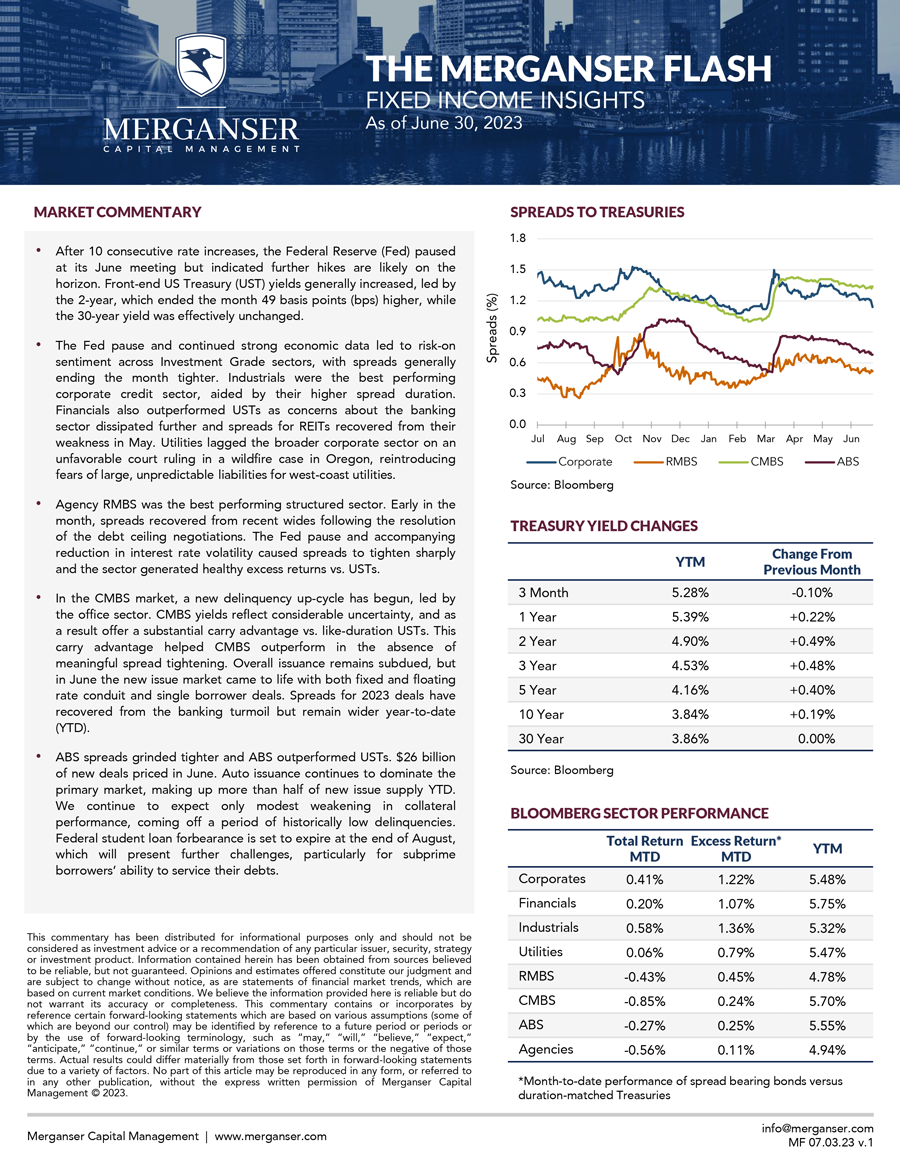- After 10 consecutive rate increases, the Federal Reserve (Fed) paused at its June meeting but indicated further hikes are likely on the horizon. Front-end US Treasury (UST) yields generally increased, led by the 2-year, which ended the month 49 basis points (bps) higher, while the 30-year yield was effectively unchanged.
- The Fed pause and continued strong economic data led to risk-on sentiment across Investment Grade sectors, with spreads generally ending the month tighter. Industrials were the best performing corporate credit sector, aided by their higher spread duration. Financials also outperformed USTs as concerns about the banking sector dissipated further and spreads for REITs recovered from their weakness in May. Utilities lagged the broader corporate sector on an unfavorable court ruling in a wildfire case in Oregon, reintroducing fears of large, unpredictable liabilities for west-coast utilities.
- Agency RMBS was the best performing structured sector. Early in the month, spreads recovered from recent wides following the resolution of the debt ceiling negotiations. The Fed pause and accompanying reduction in interest rate volatility caused spreads to tighten sharply and the sector generated healthy excess returns vs. USTs.
- In the CMBS market, a new delinquency up-cycle has begun, led by the office sector. CMBS yields reflect considerable uncertainty, and as a result offer a substantial carry advantage vs. like-duration USTs. This carry advantage helped CMBS outperform in the absence of meaningful spread tightening. Overall issuance remains subdued, but in June the new issue market came to life with both fixed and floating rate conduit and single borrower deals. Spreads for 2023 deals have recovered from the banking turmoil but remain wider year-to-date (YTD).
- ABS spreads grinded tighter and ABS outperformed USTs. $26 billion of new deals priced in June. Auto issuance continues to dominate the primary market, making up more than half of new issue supply YTD. We continue to expect only modest weakening in collateral performance, coming off a period of historically low delinquencies. Federal student loan forbearance is set to expire at the end of August, which will present further challenges, particularly for subprime borrowers’ ability to service their debts.


